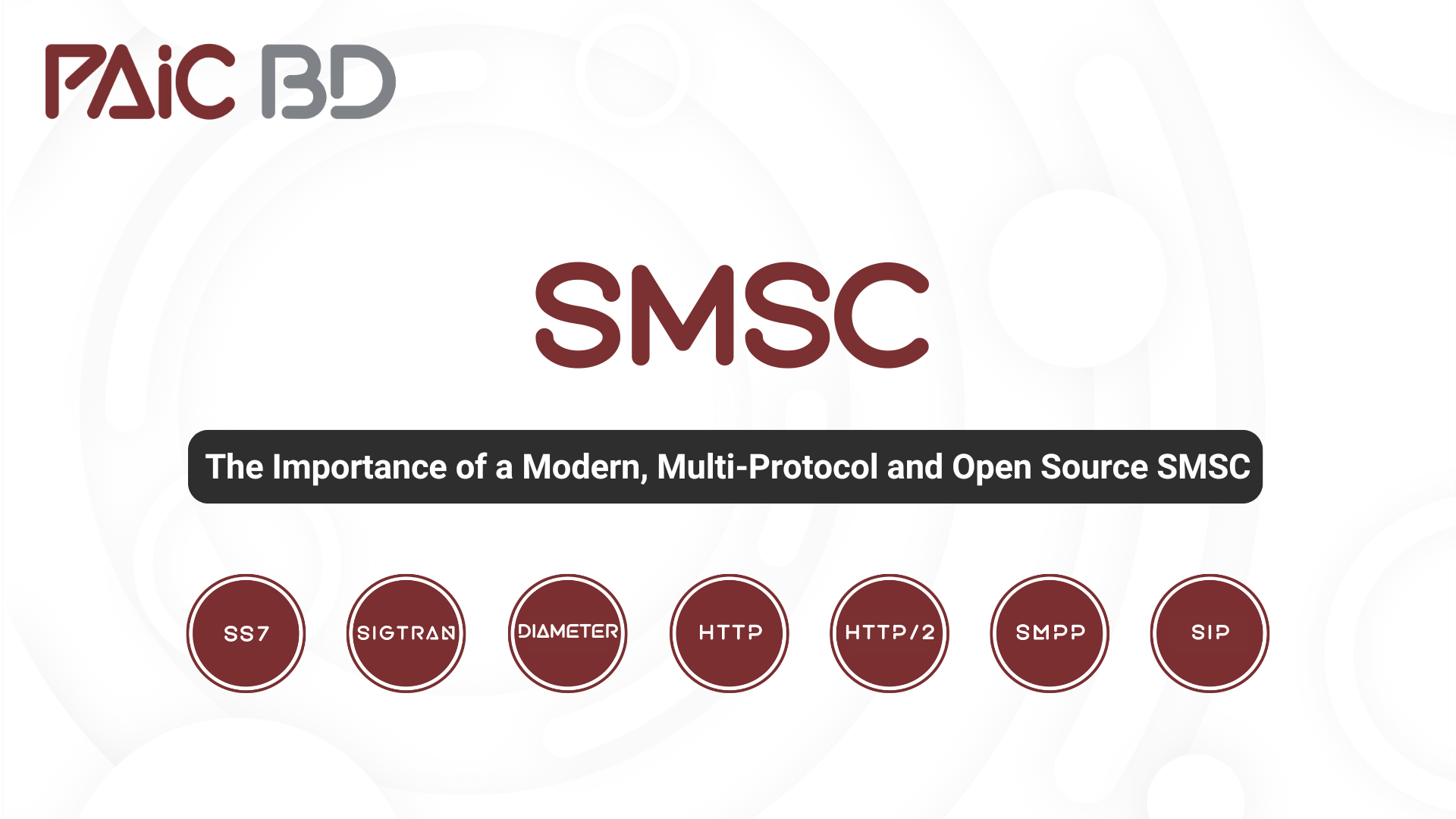
The Importance of a Modern, Multi-Protocol and Open Source SMSC
Short Message Service Centers (SMSCs) remain a critical component in mobile networks, not only for delivering person-to-person messages, but also for enabling enterprise messaging (A2P and B2C), IoT communication and various value-added services (VAS).
As networks evolve and traffic demands grow, MNOs, MVNOs, and VAS providers face increasing pressure to ensure that their SMS infrastructure is robust, flexible, and future-proof.
A modern SMSC must be capable of handling multiple protocols to efficiently interact with the diverse systems present in today’s networks. Traditional protocols such as MAP over SS7/SIGTRAN and SMPP are still essential for legacy network compatibility and interoperability with existing platforms. At the same time, modern interfaces such as Diameter, HTTP APIs, SIP and HTTP/2 are necessary to support LTE/5G networks, cloud-based services, and new digital communication models.
Supporting a wide range of protocols offers several key advantages:
• Flexibility for growth: Operators can expand services or migrate between network generations without needing systems for each technology.
• Improved service reliability: Having native support for multiple protocols reduces the need for external gateways or protocol converters, minimizing points of failure, simplifying operation and maintenance.
• Support for new business models: Modern enterprises expect to interact with messaging platforms through APIs such as REST over HTTP. A flexible SMSC enables easy integrations with a variety of business applications and IoT platforms.
• Enhanced interoperability: In multi-vendor environments, where different network elements may use different standards, a multi-protocol SMSC ensures smooth and consistent operations.
In addition to multi-protocol capability, the open source nature of our SMSC has become increasingly important. Open source systems offer greater transparency, adaptability, and control, while also reducing costs.
For MNOs, MVNOs, and VAS providers, an open source SMSC means:
• Freedom to customize and innovate: Operators can adapt the platform to their specific operational needs and integrate it with in-house tools.
• Cost optimization: Open source solutions can reduce licensing fees and prevent vendor lock-in, enabling more strategic investment in network development.
In a landscape where messaging remains critical, yet must continually adapt to changing user behaviors and technological shifts, having a multi-protocol, open source SMSC offers a strong competitive advantage, positioning organizations for growth, innovation, and long-term sustainability.
